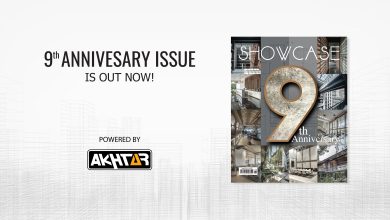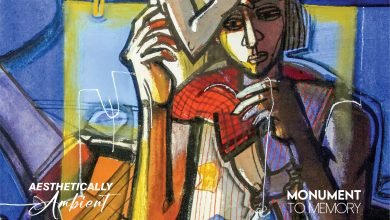The family previously resided in a very ‘old jamindar bari’ (Poddar Bari) in Lohagora, Narail. So, the spacious lavish scale and space was their part of lifestyle and emotion. Their daily activities rhymed around the grand courtyard. But when they decided to move in a new house the design became a challenge- how to merge and synchronize the perception of new space with the old imprinted memory. Therefore, when the project was handed over to architecture firm FrameWork, they intended to work with scale and proportion of the old jamindar bari and translate into a modern interpretation, so that they get an essence of their old life at the same time enjoying a new modern house. For instance, the central double height space holds and combines the whole building like the courtyard did to the Poddar house.
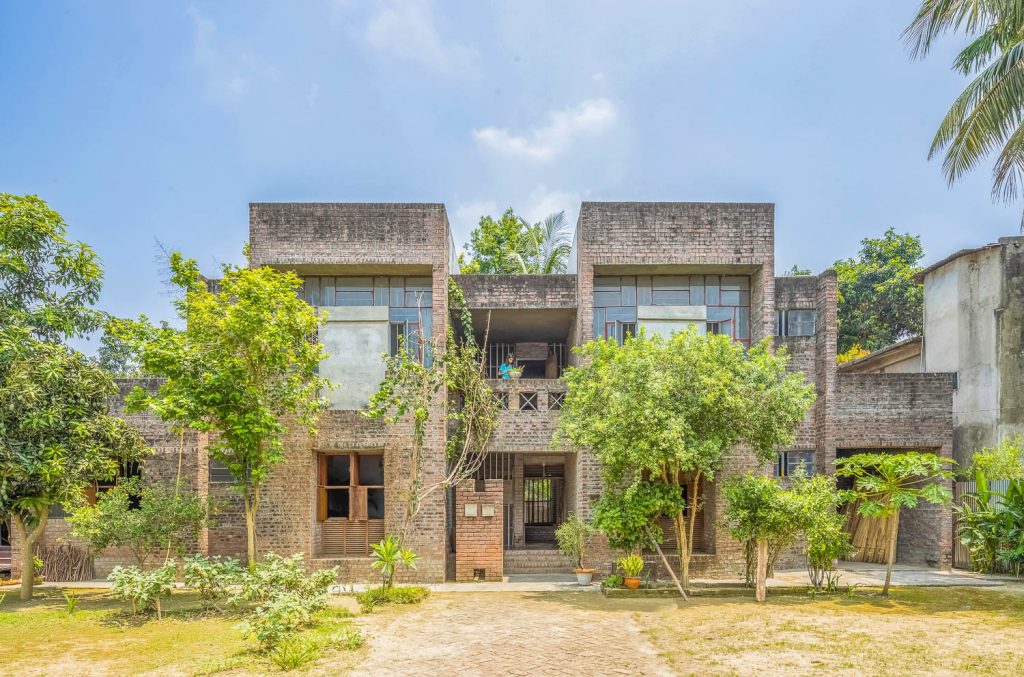
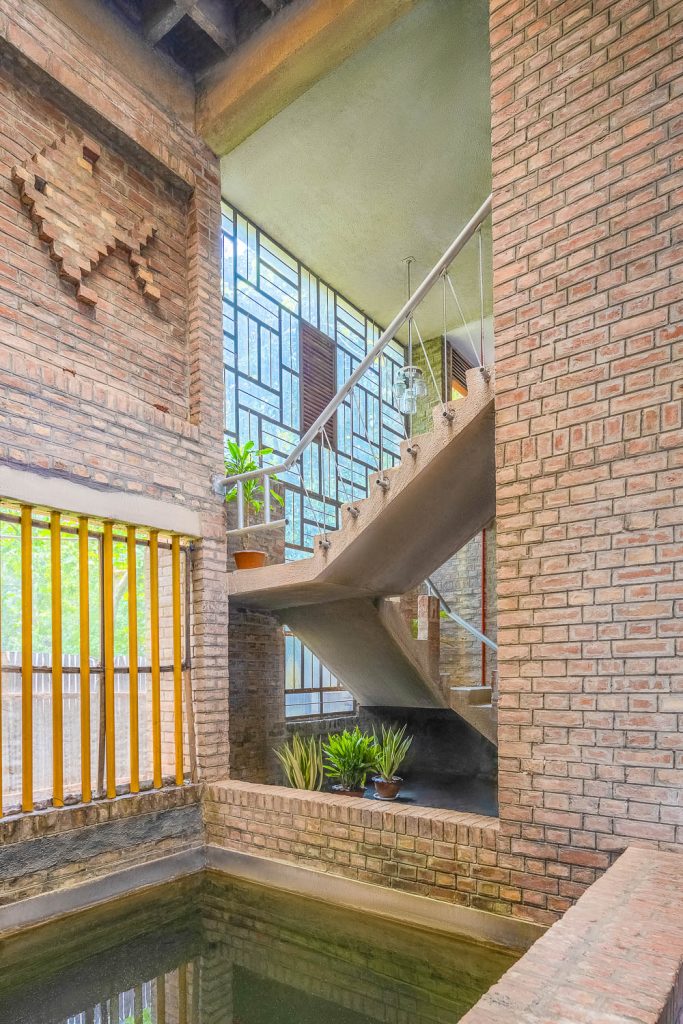
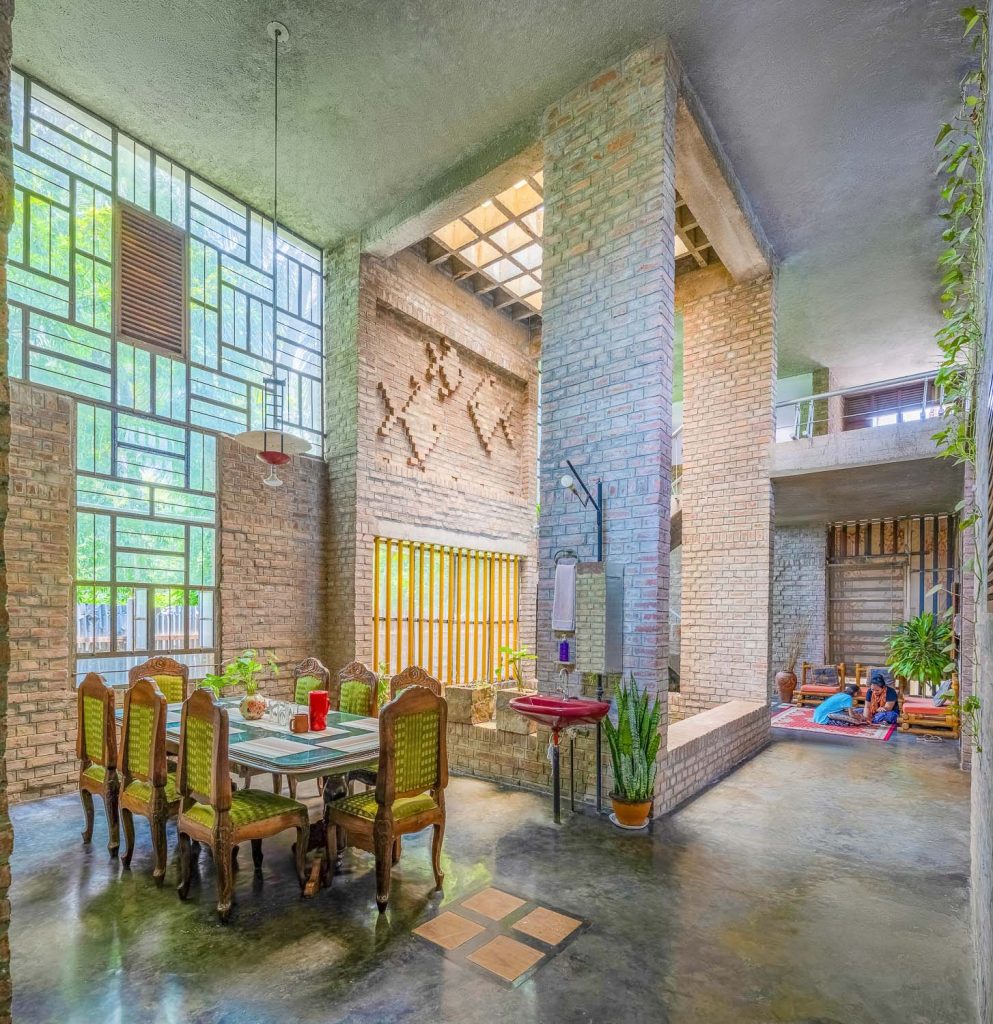
The design and construction of the project began in 2003, and took almost two years and three months. First of all, the design team started to study the old Poddar Bari, a colonial style elite mansion. The power and weight can easily be imaginable even if all ornamentation is excluded. The structure itself stands apart with the uniqueness of scale, proportion and volume. The design team was trying to regenerate and reorganize the voids which tends to flow with full freedom, merges and again departs like the river Modhumati and Chitra. Then the 4 detached container comes to reveal the spaces within, join around the double height space, the water body, the heart of the house. While designing the house, the design team was thriving to achieve pure geometry, symmetry and monumentality in 3-dimensional expression and elevation. Why the urge was so much compelling, Louis Kahn explained “Monumentality in architecture may be defined as a quality, a spiritual quality inherent in a structure which conveys the feeling of its eternity, that it cannot be added to or changed.” The team was greatly inspired by the Architecture of Louis Kahn.
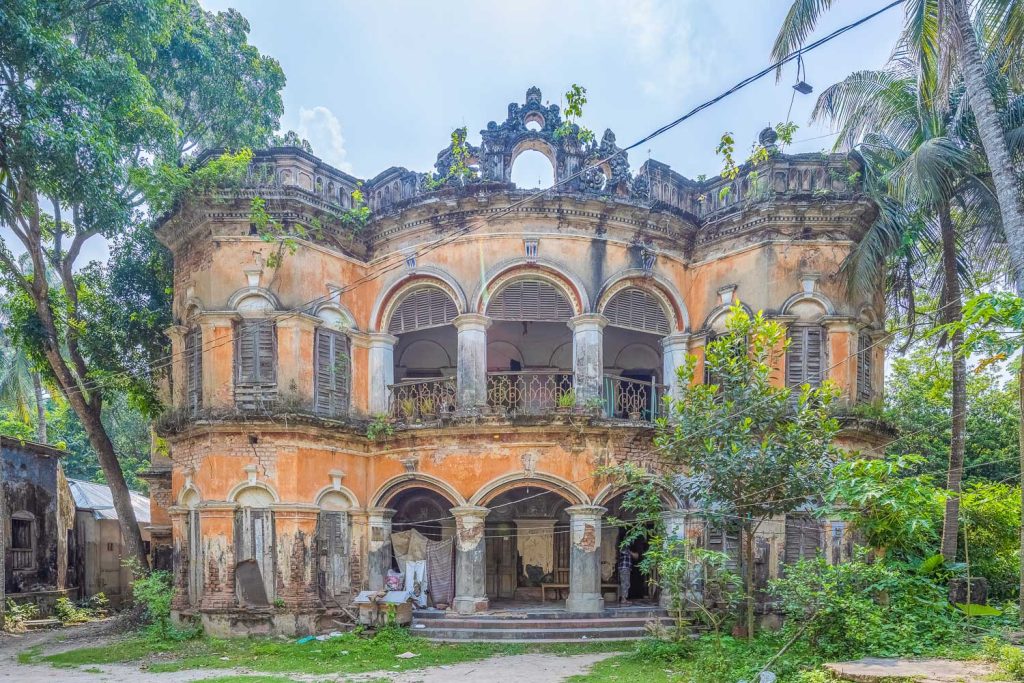
The grandeur of ‘volume’ and proportion imported from an elite villa, gradually calmed down with hand-made bricks, crafted windows, making the ambiance suitable for a middle-class humble way of living of the residents, without sacrificing the graceful gravity. The detached masses also support extensively to achieve cross ventilation, like an abstraction of rural Bengal vernacular pattern of arrangement. The doors also participate in ventilation along with windows, which were influenced by the windows of BUET Hostel. The huge T-window is knitted with glass and metal to let-in the maximum daylight from North. All the bedroom has windows surrounding the bed head-rest, the wall which gave an unparalleled characteristic to the elevation.
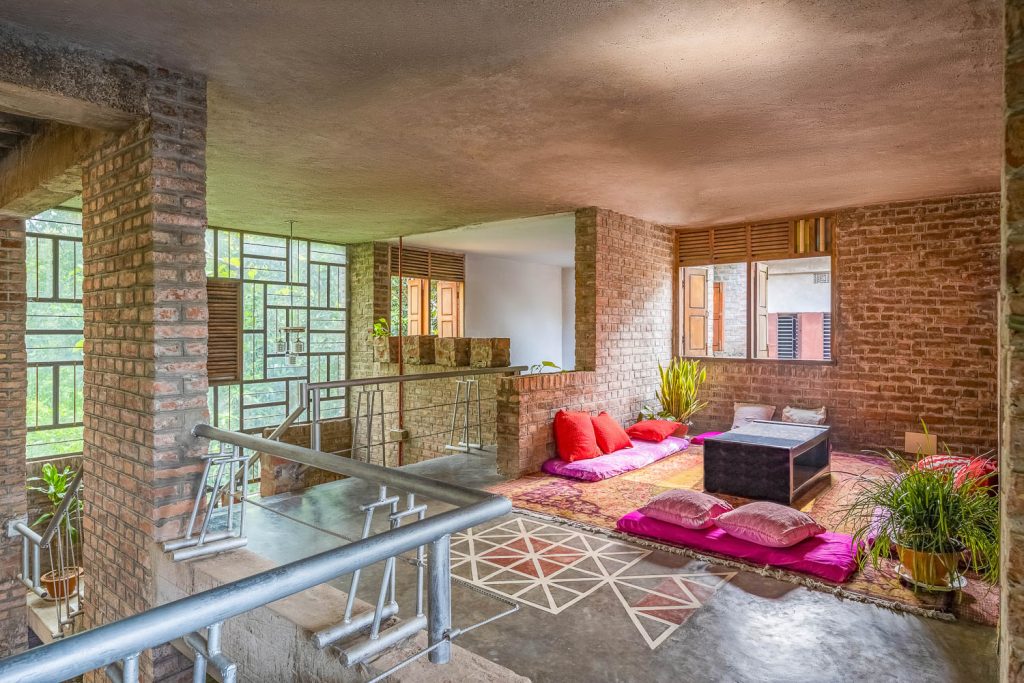
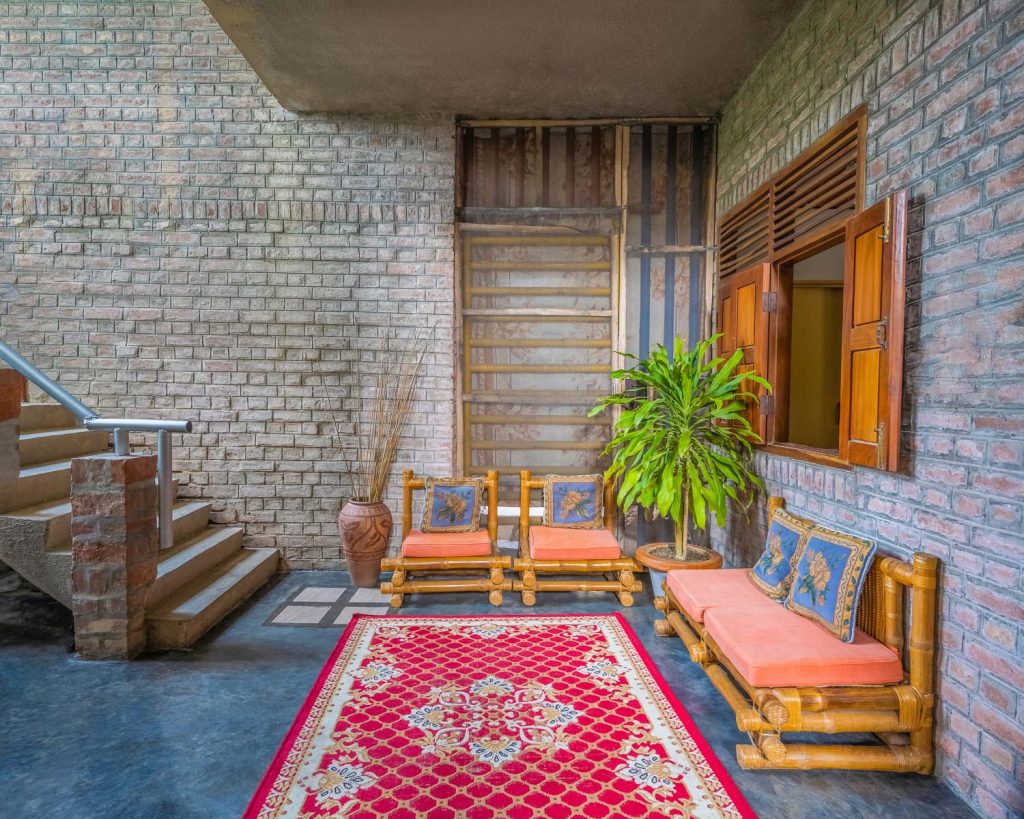
The building is elongated in East-West axis, having two terraces in end, so that the home play around sun-rise and sun-set. The sun bends and enter the house from different high openings, it touches the double height inner spaces during the golden moments of evening in summer. This central cave usually glows enigmatic due to zenithal light on water. All the water collected from roof are made to pour down through the punch above to be re-used. Sounds of these narrow streams through the pergola just entangle the mystery. These are the ingredients and this is the place which awes the visitors with sudden surprise, from the very first entry. Just to be perplexed who is welcoming- the fishes on wall, or the Modhumati River or the dweller?
But before one enter, a prelude of the whole space-story is there to tell the passers-by. The suburban monumental presence of the building. The anatomy of service and served space in façade are quite unraveled and defined. The visual weight of the new house is as similar as visual weight of the ‘Poddar Bari’. Bedrooms are stacked one upon another. The veranda above the entry is to enjoy the monsoon and south breeze. This veranda is slightly recessed backward which gives privacy also. More significantly the long-shaded veranda gives deep shade only to highlight the served space the solid individual mass by both sides. The exposed brick gives more matured impression of weathering and antiquity.
“We were very curious to find out, that through perforating the mass to cope with warm, humid climate –to what extent the solid mass retains its monumentality. The project was a tremendous learning for us to go through a rigorous exercise, to explore and adopt a perfect proportion to rebuild psychological anchors and memories by translating a monumentality into contemporary one befitting towards own climate, language and sub-urban middle-class aspiration”, expresses Md. Faysal Kabir, Anup Kumar Basak, Lead Architects of FrameWorks.
Photography by City Syntax

